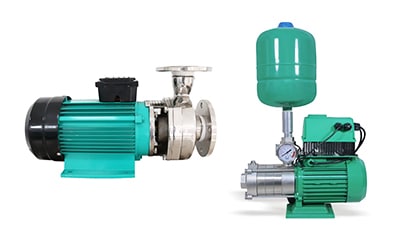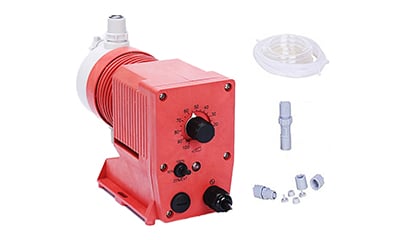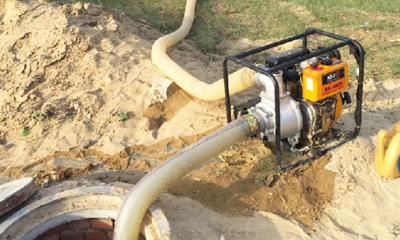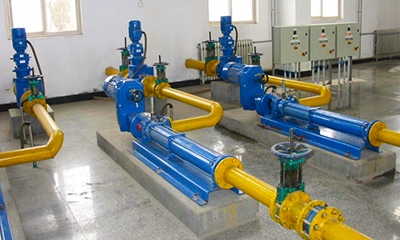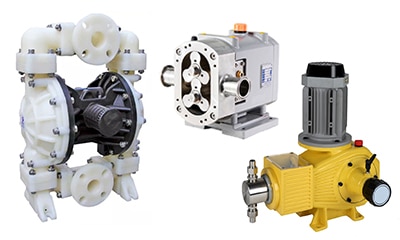What is a booster pump?
Booster pumps increase low water pressure and flow. It provides the extra boost needed to raise your water pressure to the desired level. Water booster pump acts as an intermediary between the water source and end points such as faucets, taps and showers, providing the pressure to move water out of a storage tank or throughout a house or commercial facility.
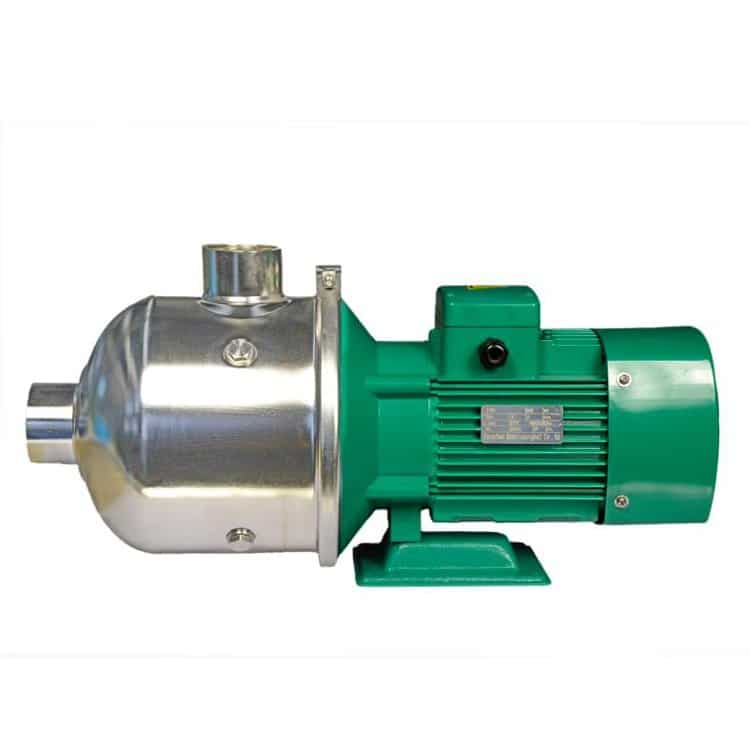
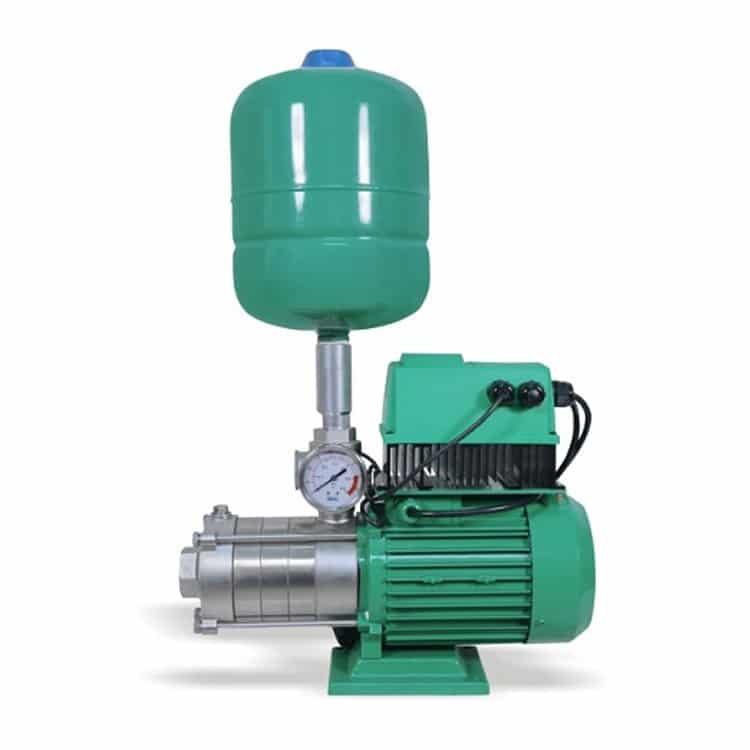
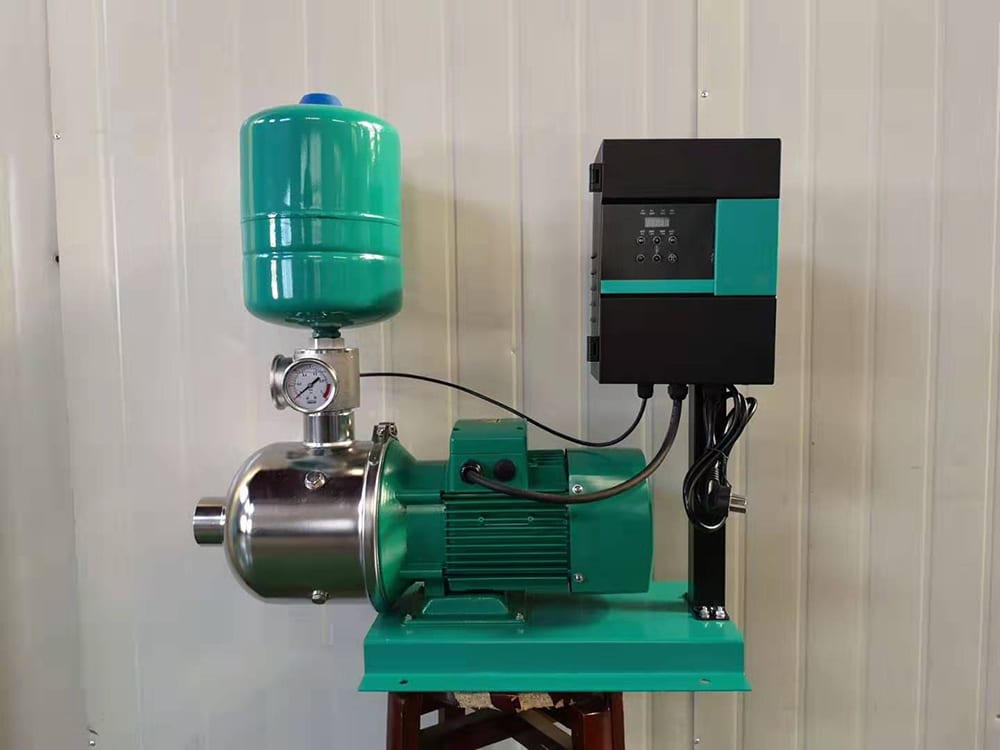
Booster pumps are suitable for many applications, with major industrial applications including:
- Filtration
- Reverse Osmosis
- HVAC
- Water Treatment
- Boiler feed
- Any industrial process requiring high fluid pressure
How does a booster pump work?
Booster pumps increase water pressure as a way to increase flow. A booster pump works like a fan with blades that rotate to increase air flow, and a booster pump has an impeller inside that increases water flow and pressure in the same way.
Most of them are centrifugal pumps that take water from a water source and move it through an impeller (single stage) or multiple impellers (multi-stage) to increase the water pressure. The high pressure water then flows through the outlet.
Construction of booster pump
- Engine
- Impeller
- Inlet and outlet
- Pressure or flow sensing devices
The booster pump has an impeller that moves water entering through the inlet and exiting through the outlet. The motor rotates the impeller. Booster pumps vary depending on how they suck in and push out water. Some water booster pumps use a rotating propeller, while others use an oscillating diaphragm. Pumps with oscillating diaphragms use two oscillating or rotating plates to push water – one with a cup and one with a notch. As the plates roll together, they compress the cup and squeeze the water out. As the plates open, more water is drawn in.
What does a booster pump do?
Water booster pumps increase water pressure, forcing water to flow through the pipes at a faster rate. But keep in mind one pump curve: as the pressure needed to move the water increases, the flow rate decreases.
Booster pumps increase low water flow in water systems or industrial facilities and deliver water from lakes, ponds or storage tanks for use in homes or commercial buildings. A home that does not get enough pressure from the city water supply will need a pump to add low water pressure. A hotel will need a large commercial booster pump to deliver water all the way to the top floor.
Booster pumps are also used to re-pressurize water in storage tanks and deliver it to taps or throughout the home. For example, in a rainwater harvesting system, water is collected in a storage tank. In order to use it to flush the toilet or wash clothes, the water must be pumped out of the tank and into the house. You will use a booster pump to move the water.
How to choose booster pump?
Booster pump types
Single-stage booster pumps are best suited for detached houses and residential buildings with moderate pressure requirements. Usually, a single-stage booster pump is sufficient for the needs of a building. When water pressure requirements are extremely high, multi-stage booster pumps come in handy. Such applications include pumping water up hills or for residential areas containing multiple buildings, maintaining city water pressure, and transporting water through very long pipes.
Home Booster Pumps — A single water booster pump can increase water pressure throughout a house. Sometimes, well water customers want to increase the flow from a low recovery well to their home. Low recovery wells do not produce enough water to meet household demand. A water pressure booster pumps water from the well water storage tank to pressurize the water in the house.
A private well that does not produce enough water to meet demand needs a storage tank to fill the well over time and a home booster pump from the tank to meet daily needs.
Booster Pumps with Expansion Tanks — Expansion or hydro-pneumatic storage tanks can augment a booster system. The tank provides additional space for water as it expands and prevents the booster pump from cycling on and off each time the faucet is turned on. A flow switch driven pump may hesitate at start-up. A small expansion tank can prevent this hesitation. A larger tank holds a certain amount of water, called a drawdown. This water is pumped out of the tank before the pump is restarted. A larger tank can provide a drop volume in a private well system, which significantly reduces pump cycling.
The truth is, choosing the right booster pump is a bit tricky. You should consider several factors, from the condition of the piping to the level of pressure head required to meet your requirements.
If your low water pressure is not caused by a leak, or if you need to increase water pressure for a particular application, then a booster pump is the best choice.
Questions to ask when purchasing a booster pump:
- What is the flow rate of my water? Consider all fixtures and calculate how many gallons of water you get per minute. Find out how to calculate the flow rate.
- How much water do I need? Consider how much water your home or business uses.
- Is the water source above or below the pump? Consider if your water has to go up a hill or up several floors.
- How much pressure do I need? Many people prefer high water pressure in the shower, but excessive water pressure can damage pipes, fittings and appliances. Most homes have a pressure reducing valve that is plumbed into the house to maintain water pressure. Pressures above 60 psi can wear out a home’s plumbing system.
Which booster pump you need depends on the amount of water you use, the pressure you need, and the location of your water source. For example, if you have a large house, you may need a booster pump that can provide pressure to the second or third floor. Applications, such as reverse osmosis systems with low feed pressures or water with high TDS (total dissolved solids), require more pressure.
How to install booster pump?
Where to install a booster pump?
The booster pump is installed where you need to pump water from it. For example, in a home with low water pressure, you should install the pump in the main line where the water enters the house. Plug into the inlet and then outlet back into the pipe supply.
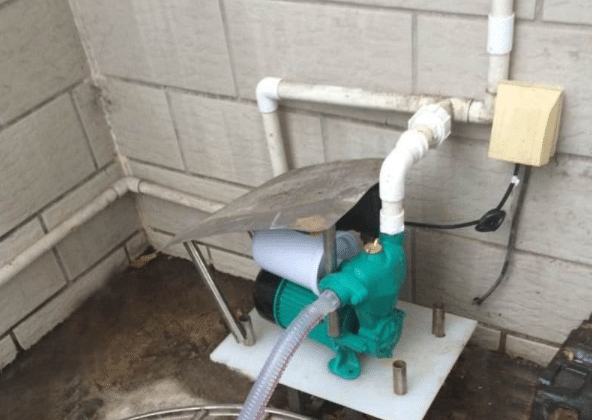
Always have a bypass in case the pump fails. If the pump fails and you need to troubleshoot it, a bypass allows you to isolate it. You can bypass the pump and still let water into the house.
Test the pump before connecting it to the house. Sometimes, leaks can cause the pump to cycle due to low flow rates. Cycling causes the pump to start and stop in quick succession.
Water booster pumps are activated by flow or pressure or both. If a leak is found, isolate the pump and test it to make sure the pump is OK. You can then find the cause and fix the leak.
How to keep your booster pump quiet
Consider pump vibration during installation. If you’re not careful, the way you install your booster pump may enhance the noise it produces. Don’t install the pump directly on the copper wiring because pump vibrations will transfer to the copper wiring and sound like an airplane flying through your house. Use flexible connectors for the inlet and outlet to minimize the sound generated by vibrations.

